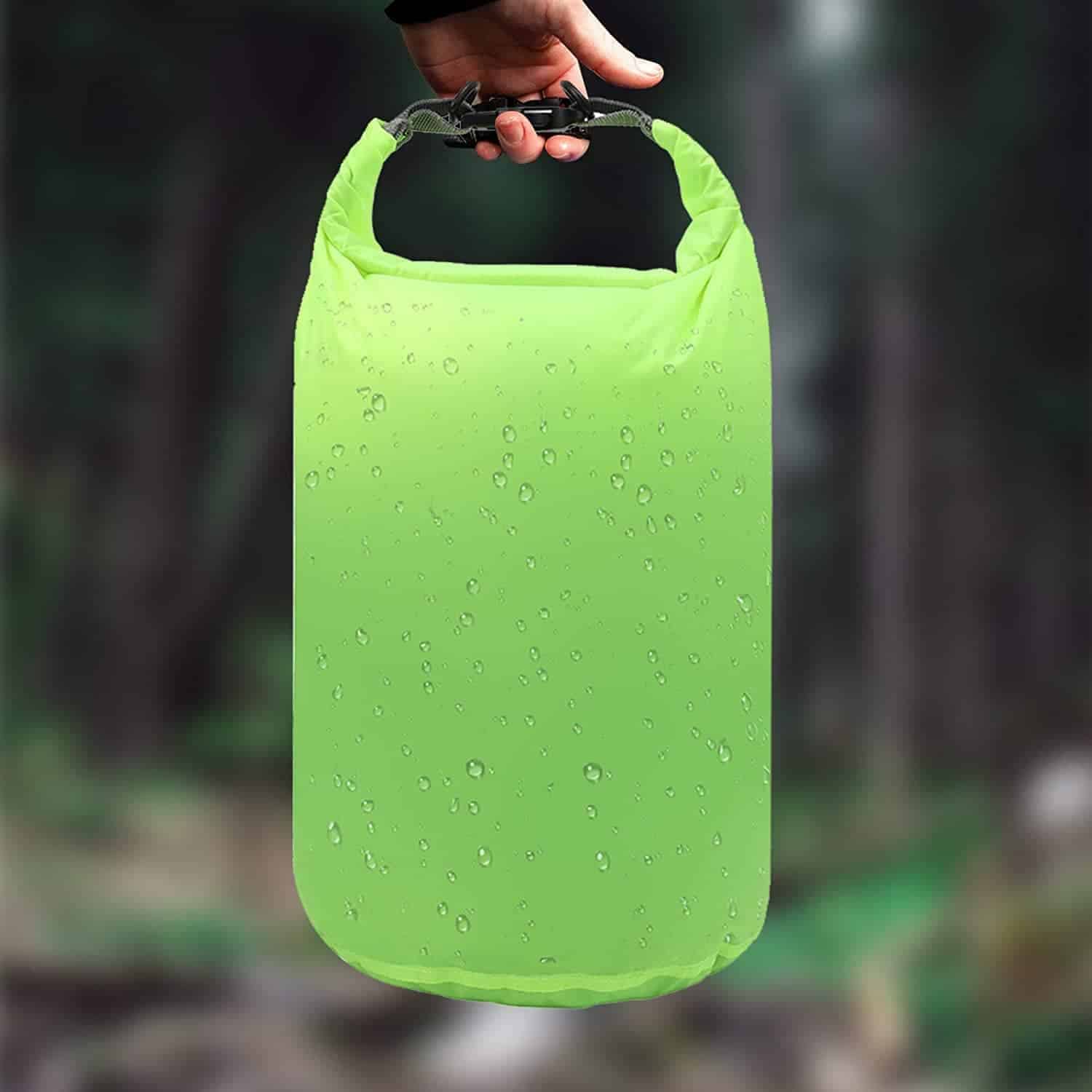Hiking is fun. However, one cannot simply ignore the number of back draws that come with it. While in the jungle, outdoor enthusiasts are constantly under threat from wild animals, insects, bugs, and ticks. Ticks are particularly a big menace during the warm weather. These parasites are known to transmit life-threatening diseases including the Rocky Mountain spotted fever, Ehrlichiosis, and Lyme disease. Alongside that, their bites cause irritation to the skin. Therefore, if you love spending time outdoors it is crucial to shield yourself from these tiny bloodsuckers. Read on to understand how to prevent ticks while hiking and backpacking.
Best Ways to Prevent Ticks While Hiking and Backpacking
The following are comprehensive tips on how to keep off ticks while hiking:
1. Treat your gear and clothing
2. Use tick repellent spray
3. Dress accordingly
4. Stick to light-colored or plain fabric
5. Take extra caution during early summer and spring
6. Beware of tick-infested trails
7. Avoid grass and thick bushes
8. Stop to check for ticks
9. Remove ticks

Image Source: Pexels
i. Treat your gear and clothing
Apparently, your clothing and other hiking gear are your first line of defense against ticks. Hence, treat them with permethrin products to keep them at bay. Alternatively, try out gear or clothing that is permethrin-treated.
“Best Suitable For Adventures Like Trekking, Rock Climbing, And Mountaineering!”
Reliable Pick
Main Features
- Very effective against ticks
- Easy to treat your clothes
- Considered safe for use
- Lasts for 6 weeks on clothes
ii. Use tick repellent spray
Another ingenious way to put any tick problem to bed is by utilizing tick repellent spray. Sprays with picaridin, permethrin or DEET are perfect for the job.
iii. Dress accordingly

One of the best ways to nail this is to tuck your trousers into your socks. Thus, you are supposed to wear thick, tall hiking socks for the sake of your feet. Likewise, go for long-sleeved shirts. In addition, if you really have to wear shorts, pull your up-the-knees socks as far as they can go.
iv. Stick to light-colored or plain fabric
Spotting tiny ticks on plain or colored clothing is a piece of cake. On the contrary, dark colors will give you a hard time and will end up harboring these vicious parasites.
v. Take extra caution during early summer and spring
Ticks are most active during hot months. Thus, you need to be extra cautious when hiking in such times of summer and spring.
vi. Beware of tick-infested trails
Beforehand information on some of the hiking trails where ticks are most prevalent is essential. In fact, the best way to find this out is to consult fellow hikers, hiking guides, and park rangers among other sources. They will pinpoint the regions that you need to keep off or exercise optimal caution.
vii. Avoid grass and thick bushes

Image Source: Pixabay
Apart from avoiding tick-infested spots, steer clear of grassy areas or spots thick under a bush. Contact with grass and bushes makes you more susceptible to tick bites. For the same reason, it is wise to walk in the center of paths and hiking trails.
viii. Stop to check for ticks
It is vital to conduct an inspection after hiking for a while in a tick-infested region. Do the same during the warm weather. By so doing, you are likely to curb tick bites. Actually, it is advisable to shower right after exploring the outdoors. This way, you may catch a biting tick hence avoid Lyme disease or any other ailment associated with these parasites.
ix. Remove ticks
Unfortunately, these notorious little bloodsuckers may still get to your skin even when you consider all safety measures. Hence, after checking, use a pair of forceps or tweezers to remove ticks.
In the same fashion, visit a doctor in the event of a suspicious rash or flu-like symptoms. They are indications of a tick bite.
What is the best way to repel ticks?
1. Tick repellent spray
As much as it may not be a permanent solution, it is still very efficient. A quality tick repellent spray provides an additional layer of defense. Even so, the repellent is bound to fade over time. You might have to beef it up every once in a while. That aside, make sure the spray is eco-friendly.
2. Tick repellent clothing
Just like the spray, there are hiking clothes industrially treated with tick repellent agents such as picaridin, permethrin, and DEET. The agents have minimal damage to the environment.
3. Treating hiking gear and clothing
In case tick repellent clothes are not available, consider treating your boots, socks, and clothes with tick repellent products.
FAQs:
Let us discuss a few FAQs related to ticks:
1. How do I know if I have ticks after hiking?
The most efficient way to determine whether you have ticks is to conduct a tick check. Focus on the areas between the joints as well as armpits, elbows, back of the neck, and behind the knees. In addition to that, concentrate on any spot covered in hair.
2. How should you dress to avoid ticks?
To begin with, you need to opt for light-colored clothing. It will be easier to point out dark ticks on bright fabric. Still, wear pants and long-sleeved tops regardless of prevailing weather conditions. On the same note, avoid clothes with holes or mesh fabric. This is because they allow the tiny parasites to penetrate.
3. How do you protect yourself when hiking?
First, it is imperative to keep the ticks off your skin. Treat your gear or clothing with insecticides that contain permethrin or picaridin. Besides, remember to wear insect repellent. Moving on, consider tucking pant legs into your socks. Similarly, keep off areas infested with ticks. Light-colored protective clothing is also great against ticks. To top it off, check and remove ticks on your pet, children, and yourself.
4. How do you deal with ticks when camping?
One of the best ways to keep ticks at bay is to pitch a tent away from grassy areas. Moreover, light-colored or plain fabrics will help you spot ticks easily. Of course, you ought to tuck your trousers into your socks or fully button your shirt to the neck. That is not all; stick to tick repellent clothing alongside tick repellent spray.
5. What time of the day are ticks most active?
Ticks are most active when it is warmer or drier. Such conditions are mostly available during midday. Yet, some ticks even hunt at dusk or dawn when it is humid.
Conclusion
Ticks are masters of camouflage. Plus, they will do anything to have a taste of your blood. Do not forget about what they can do to your health. Thus, do not give them a chance!
Disclaimer
All the information displayed in this article is in good faith and is exclusively meant for educational purposes. Under no circumstances should the images, graphics, texts, and other materials created by this article be perceived as medical treatment, diagnosis, or instruction. Only seek professional medical advice from a qualified physician concerning any medical condition.
In the event of a medical emergency, contact the nearest medical facility for assistance. Do we neither endorse nor recommend any particular claims, opinions, procedures, or products highlighted directly on the site or through links to an external website.
Always, we deduce some of the information from our outdoor, hiking, or camping experience and do not provide any warranty regarding its accuracy, completeness, reliability, and accuracy. Therefore, any action undertaken because of the information available on this website Hiking Gear Lab is entirely at your own risk. We will not be in any way accountable for damages or losses incurred through the reliance on the information on our website/this article.
Always, consult your physician or a qualified medical professional for exact information before making a decision on changing your lifestyle or diet depending on the information given in this article.
Resource and reference:





